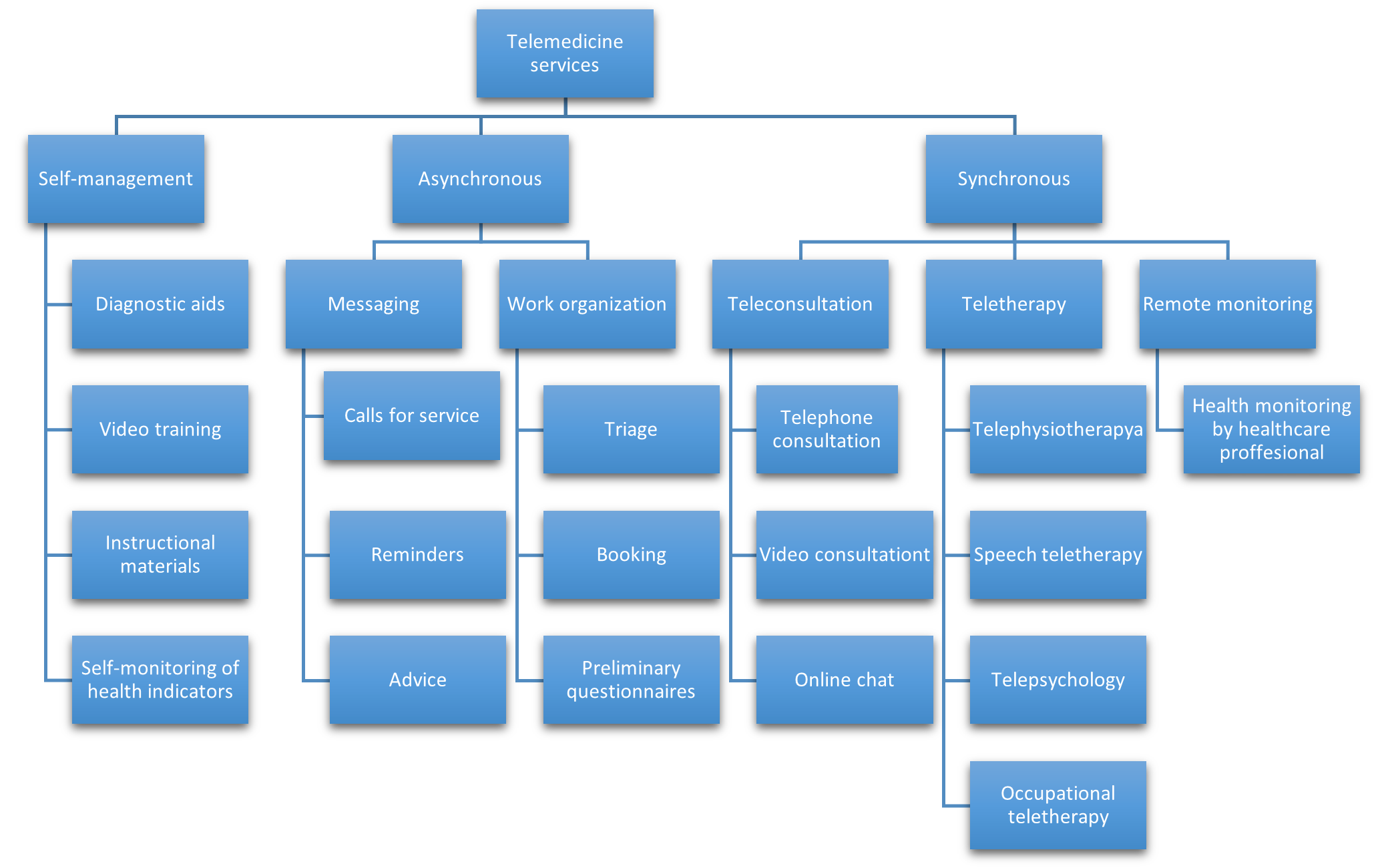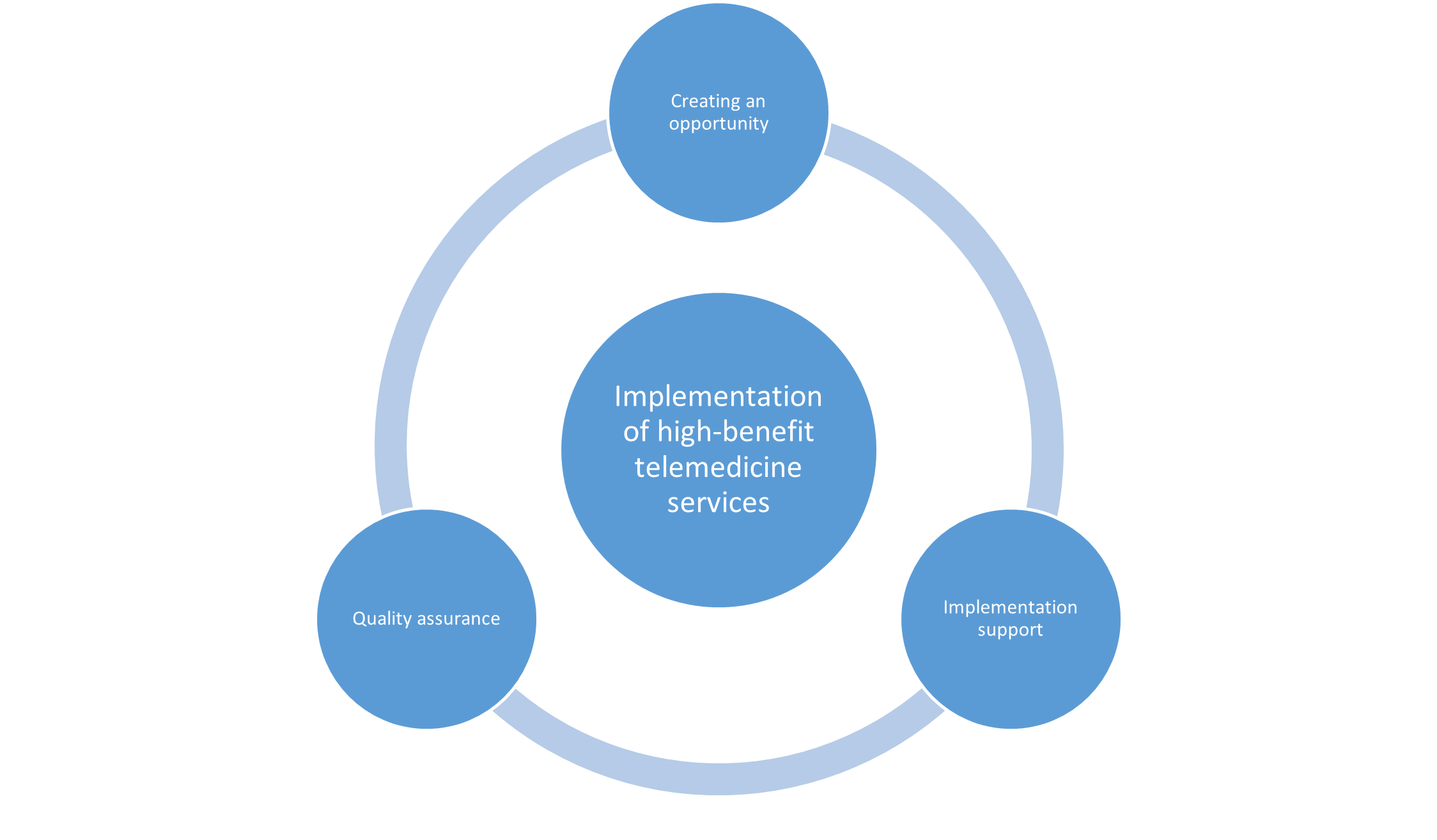Development of telemedicine

Rapid development of information and communication technology (ICT) over the last decades is increasingly affecting the provision of healthcare, enabling it to be done at a distance. More extensive use of remote services in healthcare will help overcome the challenges we face due to aging population and sparsely populated areas, as the provision of services at a distance helps reduce the costs both in terms of financial and time resources.
The European Commission defines remote care or telemedicine as the provision of healthcare at a distance by using ICT, including secure transmission of medical data and information in text, audio, video or other form of media to prevent, diagnose, treat and monitor diseases. Telemedicine services are divided into synchronous (teleconsultation, teletherapy, remote monitoring) and asynchronous (messaging) communication, but it also includes solutions where a person receives healthcare without the involvement of a healthcare professional (so-called patient decision support, reminders, notifications).

The Estonian Health Insurance Fund started developing telemedicine services in the beginning of 2020. The development of telemedicine aims to increase the continuity and quality of treatment, improve the availability of healthcare and empower patients to take more responsibility for their health. Teleconsultations by video, web or phone contact was first applied and financed by EHIF in spring 2020 during the COVID-19 outbreak as a temporary measure. As of September 2020, EHIF has financed the services on regular basis. Teletherapies (psychotherapy, physiotherapy, speech therapy, occupational therapy) were added to the list of healthcare services at 2021.

Contact: Kristin Kuusk, innovation specialist, kristin.kuusk [at] tervisekassa.ee
